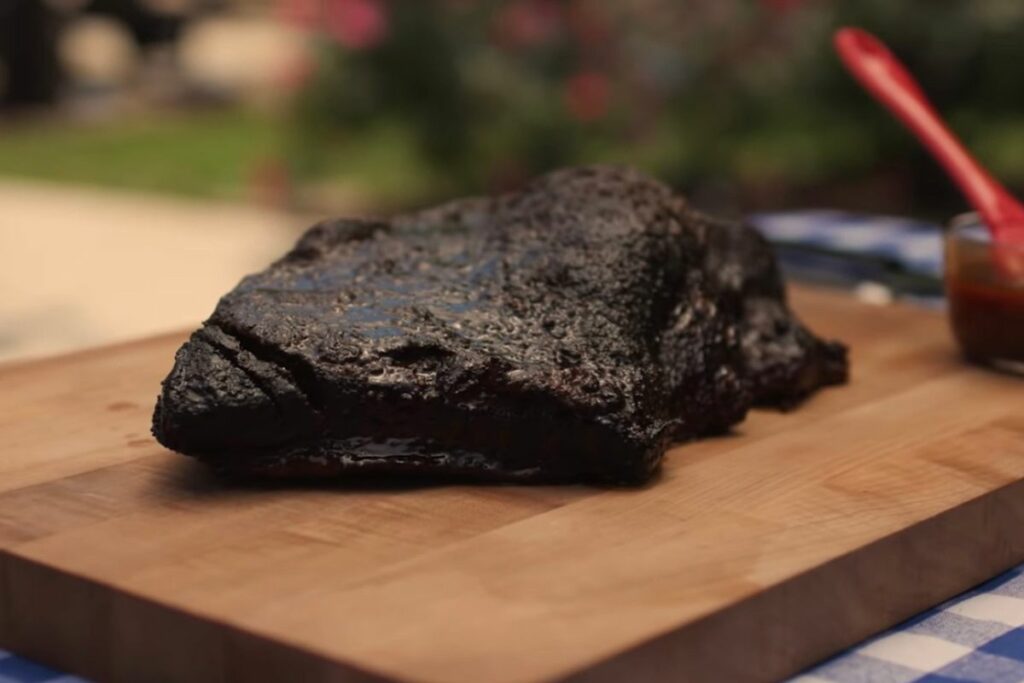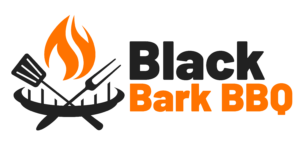Smoking a brisket requires a great deal of time and labor, but the final beef is among the most tender, moist, and tasty available.

To get the best results while smoking brisket, it is necessary to understand a few essentials. If you violate these key requirements, your brisket will be dry.
In this article, we will address the most important aspects of smoking brisket, such as smoking time per pound, cooking temperature requirements, and smoking time per pound at 225 or 250 degrees Fahrenheit.
You will have the best brisket of your life by mastering a few essentials from this article.
How Long To Smoke A Brisket Per Pound
There are several ways, techniques, and temperature preferences for smoking brisket.
It is advisable to smoke a full brisket at a low temperature between 225 and 250 degrees Fahrenheit.
Cook the brisket at 225 degrees since a difference of 25 degrees will only shorten cooking times by a few minutes.
In order to offer precise breakdowns and examples of smoking temperatures per pound, we will utilize 225 degrees Fahrenheit as our standard cooking temperature for the sake of this article.
If you pick a different temperature for smoking, you must modify the cooking time accordingly.
Recommendations For Temperature And Cooking Time

Smoke one pound of brisket at 225 degrees Fahrenheit for 1 hour and 30 minutes.
Consider the following if you wish to smoke at a faster rate or if your smoker or grill does not work well at low temperatures:
One pound of the brisket should be smoked at 250 degrees Fahrenheit for 1 hour and 15 minutes.
The following outlines smoking times:
How Long Should I Smoke Per Pound Of Beef Brisket?
2-Pound Brisket
A two-pound brisket requires less cooking time and is a great size for beginners.
2 lbs multiplied by 1.25 hours is 2.5 hours at 250 degrees Fahrenheit.
225 degrees Fahrenheit is the temperature.
1.5 kg multiplied by 3 hours equals 3 hours
4-Pound Brisket
4-pound beef brisket is plenty for a small family and requires minimal preparation time and work. Larger briskets may sometimes stall, requiring wrapping.
At 225 degrees Fahrenheit, four pounds multiplied by one and a half hours equals five and a half hours.
10-Pound Brisket
10-pound brisket are more manageable and typically will cook faster than a 16-pound brisket. Check the temperature of the brisket using a meat thermometer to determine when it’s done.
225 degrees Fahrenheit is the temperature.
10 kg times 1.5 hours = 15 hours
16-Pound Brisket
Smoking a 16-pound brisket is a time-consuming and patient procedure.
16 pounds multiplied by 1.25 hours is 20 hours at 250 degrees Fahrenheit.
225 degrees Fahrenheit is the temperature.
16 kilogrammes times 1.5 hours = 24 hours
How Is Beef Brisket Smoked?
At BBQGrillAcademy.com, we like brisket and provide a simple recipe for smoked brisket that everyone can try.
The secret to tender brisket is smoking the beef at a constant temperature using the low-and-slow method at the parameters described in this article.
How Do I Prepare Beef Brisket For Smoking?
It is easy to prepare the brisket and get it ready for the smoker. In this tutorial on smoking a brisket, we explain how to trim the beef so that it cooks evenly and does not become burned.
Seasoning
Seasoning is one of those subjects where people overthink everything. Yes, garlic powder may be used, and some individuals even inject meat using broth.
The meat should not be seasoned to the point that it overpowers the smokey flavor.
A mix of salt and paper is sufficient to season beef brisket.
How To Choose The Best Brisket
Neither the aluminum foil weave nor the kind of beef broth used to infuse the brisket is the key to making a wonderful brisket.
Everything starts with the quality of the meat. Yes, the quality of the meat will significantly affect the tenderness and juiciness of your smoked brisket.
We support companies like Snake River Farms because they provide superior meat cuts and fresh selections.
Premium Beef

Excellent smoked beef brisket demands meat of the highest grade.
To make the best-smoked brisket, you must start with the highest-quality cow cut available.
If you are new to smoking brisket and want to practice, you may use beef from a nearby grocery shop.
When you are ready to progress, however, use only the freshest and highest-quality meat available.
Burnt Ends
The pointed end of the brisket is more heavily marbled, having fat than the flat, lean cut end, that are often used for slicing. For cut brisket or charred ends, the tip is used.
These slices, which are often referred to as “meat candy,” are not really charred; they just seem to be so due to the Maillard effect.
In addition, they are often cooked separately and served with a sweet barbeque sauce.
The Best Wood Pellets For Smoked Beef Ribs
If you intend to smoke a brisket for the first time, you should experiment with several wood mixes before deciding on a flavor.
You could realize that you like fruity flavors like apple, cherry, or even maple.
Pellet grills create heat using an electric element and are plugged in much like other electric heat appliances.
Pellet grills employ an electric Hot Rod starter to ignite a wood pellet-fueled burn pot fire.
The fire is quenched after being ignited, and the wood fire continues to expand and provide heat.
As the grill heats up, pellet fuel continues to fall into the fire, generating extra heat and smoke.
Moreover, pellet grills circulate a significant quantity of air, which contributes to the formation of pure smoke.
A healthy fire emits gorgeous blue smoke, which you can read more about here.
Consider the burn pot of a pellet grill to be a single, huge wood-burning burner, as opposed to the gas grill’s several gas-fueled burners.
Due to the rapid absorption of water and expansion of wood pellets, pellets that have been exposed to the elements for weeks or months burn less effectively than pellets that were manufactured recently.
Probing Your Brisket
Whole smoked brisket is one of the most sought-after meats when it comes to barbeque.
It might be difficult to cook effectively, but with the right skills and temperature monitoring, anybody can cook like an expert.
Once you understand where, how, and why to puncture the brisket, you will be able to get the ideal tender and juicy texture.
This article addresses the subject of Where to probe brisket and explains how and why to do so.
In order to cook the brisket properly, to the proper degree of doneness, and to create juicy, tender meat, it must be probed.
By inserting a probe into the meat, the internal temperature may be monitored to ensure that the meat is smoked properly while maintaining its moisture content.
It is crucial to check the internal temperature while cooking brisket in order to avoid overcooking or undercooking.
Insert a thermometer into the thick flesh in the center of the brisket.
Some thermometers need just the tip or half of the probe to be inserted, but others require the whole probe to be inserted.
Where Should I Probe Brisket?
The problem of where to inject a probe into a brisket is critical. The best place to poke a fork into a brisket is in the meat’s thickest area, away from the fat.
You must place the probe in the center of the brisket’s densest region, which is often located between the tip and the flat.
It is imperative to avoid probing the brisket’s tip while taking temperature readings since it contains the most fat.
The probe may get entangled in fat rapidly, resulting in an inaccurate reading. Ensure that the probe does not come into touch with the fat by inserting it at an angle.
The flat is the area of the brisket that is slimmer and more readily probed. When taking temperature readings, you must guarantee that you are in the apartment’s densest area.
From the side, not the top, the brisket should be pierced. If the brisket’s top is perforated, all the juices will escape, leaving the meat dry.
Pierce the side of the brisket nearly halfway through with the probe.
At an approximately 45-degree angle, the probe should pierce the middle of the brisket. Insert the probe up until it just touches the meat into the center of the brisket.
If you puncture it too deeply, the opposite side of the brisket will be pierced and the fluids will escape.
When Should I Probe Brisket?
Based on the size of the brisket, the answer to this question will vary. After three hours of cooking, it is customary to begin checking the temperature and probing the brisket.
Clearly, this might differ depending on the size of the brisket.
At temperatures between 225 and 250 degrees Fahrenheit, it takes one to one and a half hours per pound to smoke a brisket.
Therefore, smaller briskets may be temperature-checked early.
Begin to probe the beef before it reaches an internal temperature of 165 degrees Fahrenheit or stops cooking.
Check the temperature every 30 minutes or use your smart thermometer to determine whether to wrap the brisket, if it has stalled and when it is done.
Final Thoughts

The bigger the brisket, the longer it takes to cook per pound, since it requires more time for heat to penetrate and reach the core of the beef.
Brisket is a tough cut of beef that thrives from low-temperature, slow cooking.
This cooking method breaks down the collagen and connective tissue in meat, leaving it tender and juicy.
However, if the brisket is overcooked, it will become tough and dry.
So how can one determine when a brisket is done?
Using a digital thermometer and waiting until the meat reaches 190 degrees Fahrenheit is the most precise approach for detecting whether it is cooked.
Again, don’t guess or depend on the color of the rind; instead, regularly check the temperature of the flesh, and you’ll get the right answer.
Frequently Asked Questions
How Is Brisket Wrapped?
When the smoked brisket reaches a temperature of 165 degrees Fahrenheit, it is removed from the smoker and wrapped in pink butcher paper.
This is sometimes referred to as a Texas crutch.
Wrapping allows the brisket to achieve a higher internal temperature without drying out.
Wrapping the brisket prevents “stalling,” which happens when surface evaporation stops the cooking process.
Depending on its size, temperature, and cut, the cooking time for brisket ranges from 8 to 16 hours.
The typically smoked brisket takes 225 to 250 degrees Fahrenheit and around 17 hours of cooking at this temperature range.
How Long Must Beef Brisket Be Smoked?
We have a unique animal species; cutting is not a typical practice. You estimate your brisket’s cooking time depending on its weight.
Keep in mind that internal temperatures control everything.
Beef is cooked when its internal temperature reaches 165 degrees Fahrenheit, whereas brisket is cooked when its internal temperature reaches 190 to 200 degrees.
How Can I Quicken The Cooking Procedure?
You may also use the Texas Crutch technique to expedite matters at a standstill. This procedure involved twisting the beef brisket.
To prevent the bottom from burning, place the brisket fat side down and preheat the smoker to 350 degrees Fahrenheit.
Consequently, at 330 degrees Fahrenheit, your brisket would cook much faster, but it may become tougher.
Keep in mind that beef brisket gets more tender when cooked at a lower temperature and that wrapping the meat may save around 45 minutes per pound without losing its smokey flavor or bark.
- Porterhouse Vs. Ribeye - May 16, 2022
- How Long To Smoke A Brisket Per Pound – Explained - May 16, 2022
- What Is A Tomahawk Steak? - May 16, 2022








